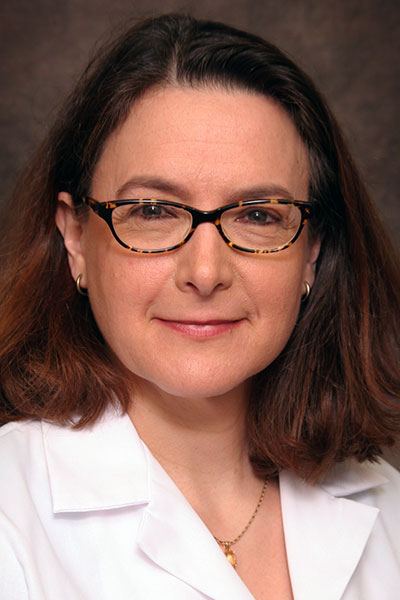
Calcium pyrophosphate (CCP) arthritis was first described more than 50 years ago. Since then, researchers have found that this extremely painful type of arthritis is extraordinarily common but significantly underdiagnosed.
Ann Rosenthal, MD, Will and Cava Ross Professor of Medicine and Chief of the Division of Rheumatology at the Medical College of Wisconsin and associate chief of staff for research and development at the Zablocki VA Medical Center, will present State of the Art: Looking at the Crystal Ball: CPP Arthritis. The first airing, complete with a live question-and-answer session, will take place from 3 – 3:45 p.m. EST Sunday, Nov. 8, and registered attendees can watch a replay on demand through Wednesday, March 11.
Dr. Rosenthal will explain the clinical features, some new diagnostic modalities, comorbidities, and management strategies in calcium pyrophosphate (CPP) disease (CPDD). Her session also will touch on the pathogenesis of the disease, where she focuses most of her research efforts.
CPP arthritis is an extraordinarily common type of arthritis, mostly affecting older populations. Some estimates say that about 10 million people in the United States could have CPP arthritis, but the epidemiology traditionally has been poor and often goes undiagnosed, Dr. Rosenthal said.
“People ignore this disease because it doesn’t have effective therapies,” Dr. Rosenthal said. “There’s the thinking, ‘Why should I diagnose it if there’s nothing I can do about it?’ But I think that there is a lot you can probably do about it now that’s not being done because it’s not being diagnosed, and it the near future there’s going to be some exciting therapies.”
Dr. Rosenthal will talk about some of those emerging therapies, which could be ready as soon as 3-5 years from now as researchers continue to gain a better understanding about the disease.
Dr. Rosenthal noted many patients endure missed diagnoses because many patients with CPDD also have underlying OA. It can also be difficult to distinguish CPDD from other rheumatic diseases.
While arthrocentesis remains the gold standard for diagnosis, new imaging technology may result in easier and more accurate diagnosis.
The current management of acute CCP arthritis uses similar medications to those used for acute gout. However, there is a lack of evidence for dosing and timing of these drugs for CPDD, Dr. Rosenthal said. The struggle continues with chronic CPDD disease, as some patients have repeated episodes of inflammation and others have constant inflammation.
“These two patient groups are difficult to manage, so we borrow from the rheumatoid arthritis armamentarium a bit,” Dr. Rosenthal said. “We’ll use low-dose steroids, if we have to, but there is some evidence for use of methotrexate, and hydroxychloroquine may be helpful. Many providers will try IL-1 inhibitors for CPDD, and because of COVID, people are much more comfortable with some of these drugs.”
While CPP arthritis mostly occurs in patients older than 65 year of age, those who present with wide-spread disease at younger ages typically have a metabolic abnormality causing CPDD. Dr. Rosenthal will explore the phenotypes and comorbidities that occur in CPP arthritis, and ways to help differentiate it from OA. Not only do these phenotypes and comorbidities help with diagnosis, Dr. Rosenthal said, they provide critical clues to the disease’s pathogenesis.
Understanding the pathogenesis will lead to better understanding of the disease and improved opportunities in the research space.
“We always thought that CPDD was a cartilage problem and there’s some very interesting new data suggesting it may be also a bone problem,” Dr. Rosenthal said.


